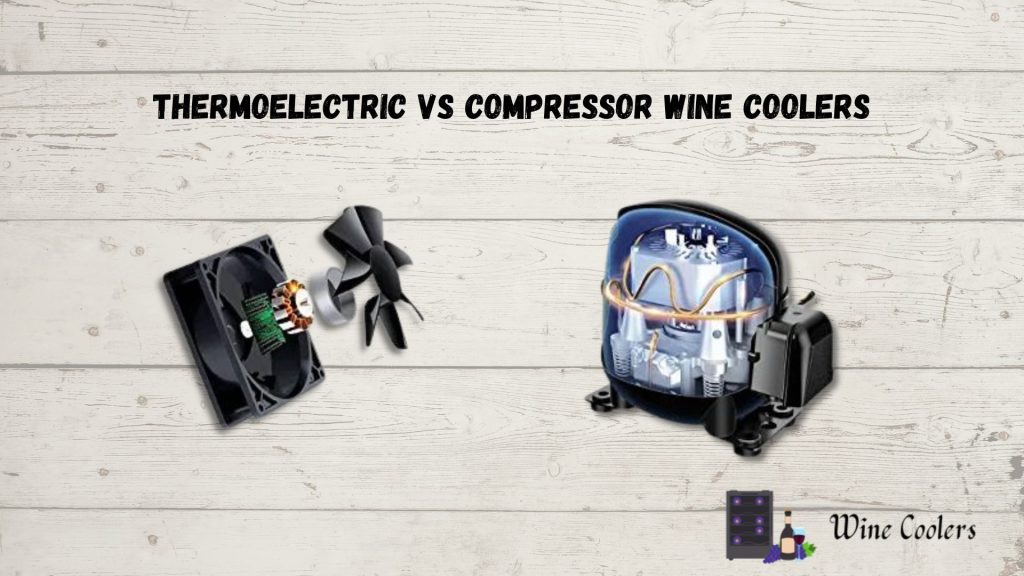
Is a wine fridge something you’re looking into getting? You may be debating between thermoelectric and compressor wine coolers. No matter whatever wine cooler you choose, your wine will be preserved. When running, which one causes no vibrations?
You’re not sure if a compressor-free wine cooler is the best option for you. We’ve done the research and compiled a helpful reference to the two primary wine cooler designs available.
Also Read: Best Wine Cooler Brands
What is the science behind thermoelectric wine coolers?
The Peltier effect is at the heart of how thermoelectric wine coolers function. The two parallel semiconductors are encased in a sandwich of two thermally conductive plates. By applying a current to the semiconductors, heat is transmitted from one plate to another. Heat is transported from a plate on the inside of the cooler’s back to a plate on the outside that is connected to a heat sink, allowing the cooler to maintain a constant temperature. The heat sink is an enlarged component covered with aluminum fins, which direct heat away from the device via its back. A set of miniature fans completes the cooling system, allowing for more effective internal air circulation and the release of hot air to the exterior.
These systems can only chill the air that is already there, so while they are easy to use, efficient, quiet, and long-lasting, they cannot replace a compressor in the process of creating cold air. Under ideal conditions, they may lower the temperature of the air by around 20 degrees Fahrenheit; inside a wine cooler, this number rises to around 30 degrees.
Wine coolers like these are great for preserving wine’s natural acidity and flavor, but they can only do their job if the ambient temperature and humidity aren’t too high or low. The cooler requires a constant temperature of 50 to 80 degrees Fahrenheit around it in order to function efficiently.
Also Read: How to Store Wine at Home
How Do Compressor-Cooled Wine Coolers Work?
A compressor-cooled wine cooler is your best choice if you need to put your cooler somewhere with a larger temperature range, especially hotter climates.
A wine cooler with a compressor is similar to a refrigerator in operation. To cool down the surrounding area, liquid refrigerant fluids go through a cycle of intense compression and condensation, followed by expansion and evaporation. The liquid’s temperature increases during compression and lowers precipitously after expansion. Fans blow the cold air within the cooler while the cold liquid travels through a series of coils; the liquid is then compressed, condensed, and expanded again to maintain producing cold air.
Wine coolers that use compressors to chill the wine are noisy, vibrate, and consume more power than their thermoelectric counterparts because of the motors they employ. Because they employ refrigeration rather than heat transfer to cool the air, they can keep the inside at a comfortable temperature even as the weather outside warms up. The superior cooling capacity of these wine coolers allows them to be significantly bigger than thermoelectric wine coolers.
Also Read: Wine Storage Temperature Chart
Wine refrigerators can be thermoelectric or compressor-cooled, and both have their advantages and disadvantages. Remember that many households have more than one wine cooler. Putting a thermoelectric wine cooler in a dark, cold place like a basement or wine cellar is ideal for maturing wine over the long term. However, a compressor-cooled wine cooler might be just what you need in the kitchen, bar, or dining area, where temperature swings are more common and where you’ll want to keep wines to chill them (especially whites) before consumption.
